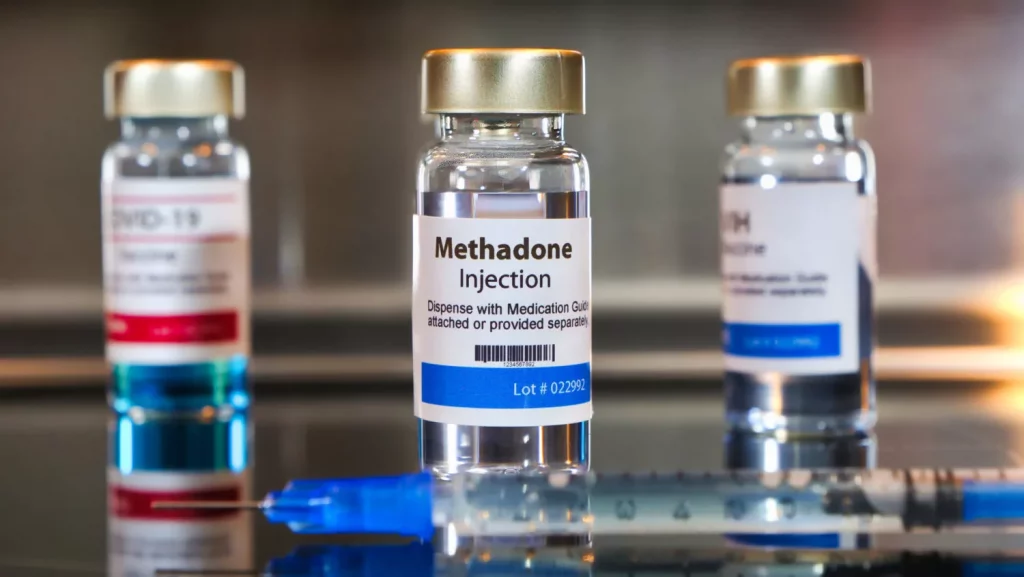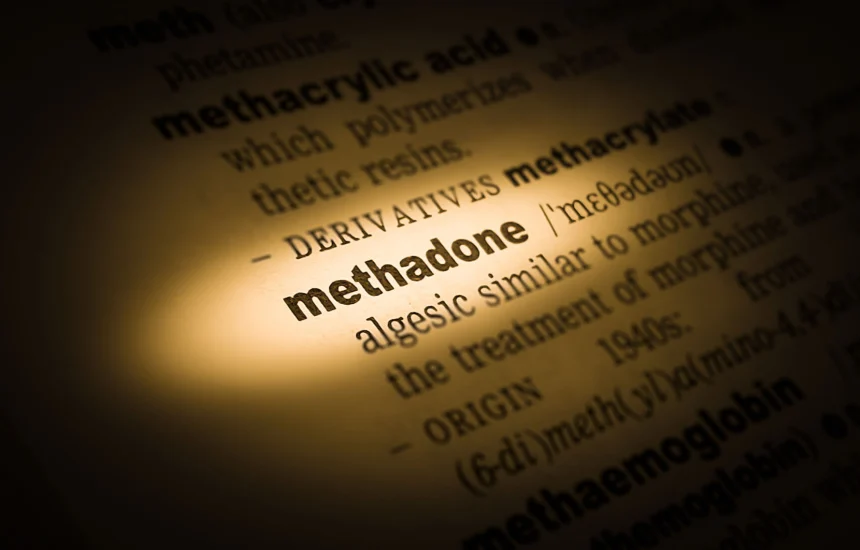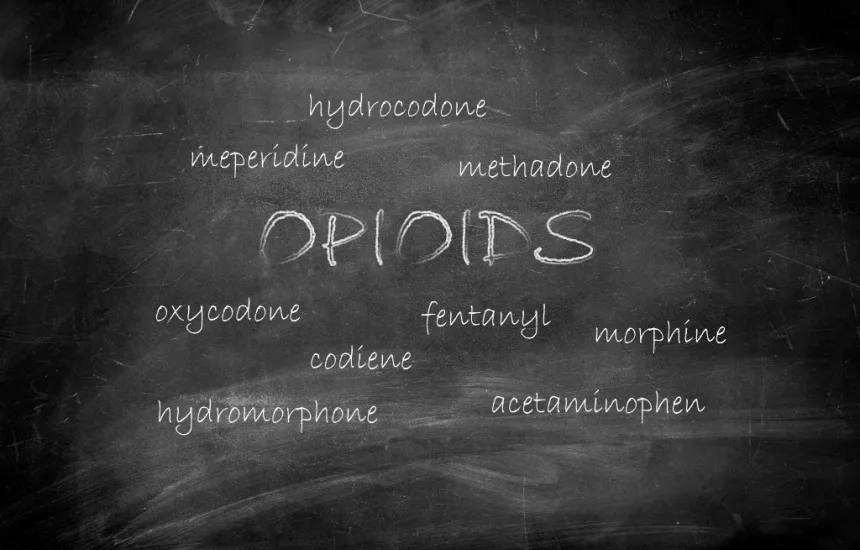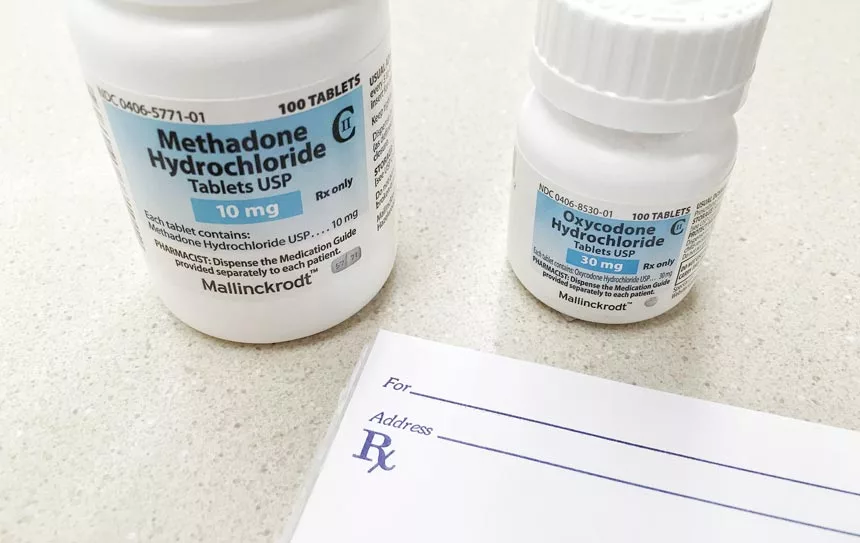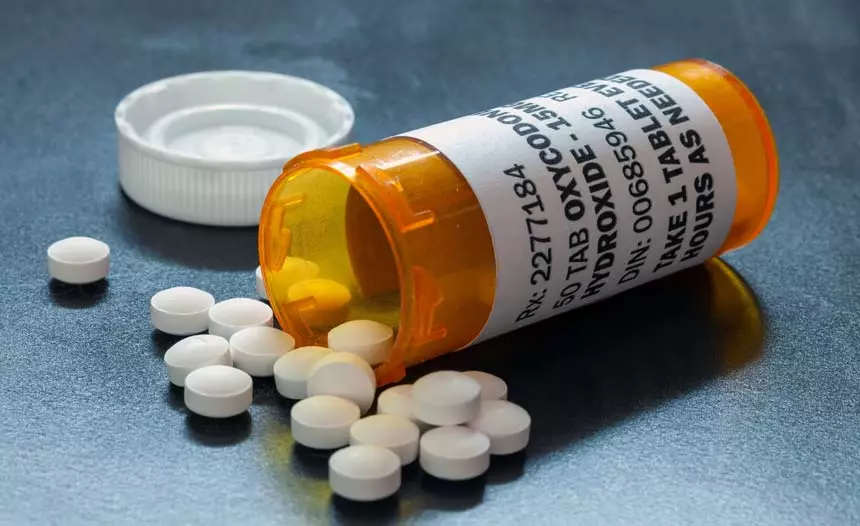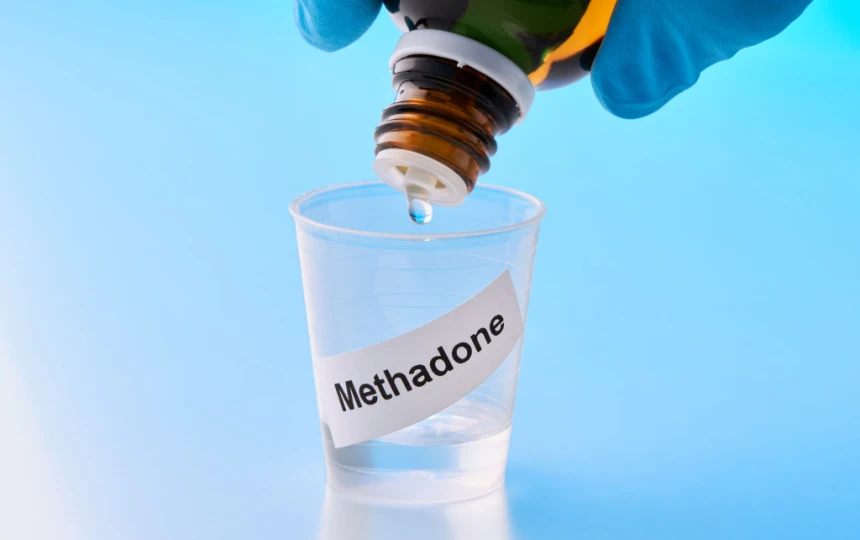The Process of Withdrawal from Methadone
Table of Contents
- The Process of Withdrawal from Methadone
- What Is Methadone?
- How Does Methadone Work?
- What is Methadone Abuse?
- What is Methadone Addiction?
- Precautions Surrounding Methadone Prescribing
- Methadone Withdrawal: How Long Does It Last?
- Breaking Down the Details of Withdrawal from Methadone
- Can You Overdose on Methadone?
- The Positives of Methadone
- Benefits of Methadone Tapering vs. Quitting Cold Turkey
- The Benefits of Medically Supervised Detoxification
- Detox Medications Used to Reduce Methadone Withdrawal Symptoms
- Addiction Treatment Options: Rehab
- What are the Symptoms of Methadone Withdrawal?
- A Sample Methadone Withdrawal Timeline
- Can I Withdraw from Methadone Alone?
- Withdrawing from Methadone: Support is Crucial
- Methadone Withdrawal Help: Found Here
- Medically Reviewed By
Although methadone is used to help addicts to quit other opioids without the severe side effects, it is possible to develop an addiction to it after a period of long use. As a long-acting opioid, it doesn’t clear out of the bloodstream quickly, so the typical methadone withdrawal timeline is longer. In fact, it may run into many months for those that have been abusing methadone for a relatively long time.
If you or any of your loved ones are going through methadone dependence or addiction after long periods of using it, we know it can be unpleasant, scary, and confusing, especially when you are trying to stop. Methadone is a central nervous system-acting drug and withdrawing from it by yourself is probably something you want to avoid.
However, it’s good to know that there’s help. What’s more, understanding what you or your loved one are going through and knowing others have successfully dealt with it can be comforting.
This article will help you learn what withdrawal from methadone means, how long it lasts, the symptoms that follow, and how to seek help.
What Is Methadone?
Methadone, otherwise known as a maintenance treatment to prevent opioid withdrawal and help reduce drug cravings. It was first developed in the 1960s, as a long-acting synthetic opioid painkiller, helping individuals who suffer from opioid addiction. While it can be a very effective measure in treating opiate addiction, it too can be addictive itself. According to the Centers for Disease Control and Prevention:
- Deaths from opioid medications (including semisynthetic opioids, natural opioids, and methadone) have increased more than 300% in the last 20 years
- Methadone is responsible for nearly one in four opioid-related deaths
Methadone is currently an opioid drug used in medication-assisted therapy (MAT) to help patients replace problematic opioid use disorders (OUD). Methadone has been used since World War II to treat addiction to heroin or prescription painkillers. Doctors may prescribe it to treat chronic pain.
This drug is both safe and effective when used as directed. It enables people to recover from addiction and resume active and meaningful lives. Patients should participate in a complete medication-assisted therapy program that includes counseling and social support for the best results.
Methadone is a federally classified Schedule II substance, which means it has a genuine legal use but a substantial risk of opioid addiction in its users. This also implies that using methadone to get high is unlawful and that overuse can result in mental distress and physical dependence. Hydrocodone and morphine are two other Schedule II medicines, for a point of comparison.
How Does Methadone Work?
Methadone works by changing how the brain and nervous system respond to pain. It also helps to lessen the painful symptoms associated with opiate withdrawal but also blocks the euphoric effects that opiate drugs can give to someone. It’s offered in pill, liquid, and wafer forms and is taken once a day. Chronic pain relief from the dose of prescription painkillers like methadone will last about four to eight hours.
As mentioned previously, methadone is part of medication-assisted treatment (MAT). It’s the use of medications in combination with counseling and behavioral therapies, to prove a “whole-patient” approach to the treatment of substance use disorders. The length of time one is on Methadone can vary from person to person. The National Institute on Drug Abuse says, the length of addiction treatment should be a minimum of 12 months, while some patients may require treatment for years. It must be stopped gradually to prevent withdrawal.
Methadone alters the way the brain and nervous system respond to pain. It alleviates the unpleasant symptoms of opiate withdrawal and prevents the euphoric effects of opiates like codeine, heroin, and morphine, or semi-synthetic opioids such as hydrocodone and oxycodone.
Methadone is available in tablet, liquid, and wafer forms and is administered once a day. A methadone dose provides pain relief for four to eight hours. According to, methadone is beneficial in higher doses, particularly for heroin addicts, and can help them stay in addiction treatment programs for extended periods.
Methadone, like all other drugs used in medication-assisted therapy, must be provided as part of a comprehensive methadone treatment plan, which includes counseling and social support.
How does Methadone Make You Feel?
Methadone acts as a full agonist binding to opiate receptors in the brain, leading to a similar high you feel on opiate drugs. When beginning the treatment, some may experience sedation and other effects that are similar to opioid drugs. As the treatment process continues and a stable dose is established, tolerance will be developed. Luckily, methadone therapy does not interfere with thinking or cognitive functions generally.
So one can go to work, and school, be involved with family, and be normal. But, without a prescription and in high doses it is possible to induce a methadone high. Methadone abusers may reach a state of euphoria, its effects can be similar to those of heroin abuse, but at a lower intensity.
What is Methadone Abuse?
Methadone is a regulated substance used to treat opioid addiction and urges. Patients with methadone prescriptions in an outpatient setting must visit a clinic daily to receive their dose. It is a highly potent opiate with addictive properties.
Since they have a history of opioid dependency, people who use methadone to overcome their opiate addiction are more predisposed to methadone abuse. Some addicts chose methadone as their primary drug of choice. Methadone abuse occurs when someone takes more than their prescribed dose or takes it without a prescription.
Side effects of methadone include:
- Fatigue and muscle weakness
- Decreased reaction time and attention span
- Sedation
- Euphoria
- Dry mouth
Methadone can produce an actual “high” in large doses. The euphoric effects can also be amplified through delivery methods such as intravenous use.
What is Methadone Addiction?
Methadone is a potent and extremely physically addictive opioid medication. It helps counteract the intoxicating effects of more potent opiates like morphine and heroin, but in high enough doses, especially when given intravenously, it may cause sedation.
People who abuse methadone for its intoxicating effects or use it for legitimate medical issues may develop a tolerance to the drug and an addiction to it over time. Those who have already developed an addiction to opioids are at an even greater risk of developing an addiction to methadone.
Methadone addiction has several symptoms, including:
- Experiencing cravings or withdrawal symptoms
- Using higher methadone doses than the prescribed amount
- Placing methadone use ahead of all other responsibilities
- Regularly using methadone when there’s no need to
- Facing challenges when trying to quit methadone use despite trying
If you suspect a loved one has a methadone use disorder or addiction, taking preventative measures helps reduce the risk of the patient’s health deterioration and fatal overdose. Methadone addiction is treatable through weaning off the drug in professional addiction treatment programs.
Families and friends can stage a formal intervention with the assistance of an interventionist or medical professionals trained to diagnose and facilitate intervention for substance use disorders. It’s crucial to locate a suitable treatment program ahead of time so that the person can start treatment as soon as it’s accepted, improving their chances of recovery.
Precautions Surrounding Methadone Prescribing
Methadone has the potential to be addictive, so it must be administered strictly as prescribed. This is especially vital for patients permitted to take methadone at home and are not compelled to take medication at an opioid treatment program (OTP).
Methadone prescriptions are personalized to the particular patient because doses are frequently readjusted. To ensure safer methadone use, patients should submit their complete medical history to their healthcare providers.
Be sure to inform your healthcare provider if you suffer from:
- Heart disease
- Electrolyte imbalances
- Respiratory illnesses
- Head injury
- Liver issues
- Mental health issues
Other drugs, such as narcotics, may interact with methadone, causing heart problems. Methadone is classified as a central nervous system (CNS) depressant, and when mixed with other depressants such as alcohol, there is a very high chance of severe effects. Some persons who are addicted to methadone have a dual diagnosis, though mental illness does not preclude methadone use, it can be an importance factor to consider before beginning a methadone program.
Who Should Avoid Methadone?
Methadone can treat opioid use disorder (OUD) safely and effectively when taken as directed. However, it isn’t always the best treatment option for all patients. People with the following conditions should avoid methadone use:
- Methadone allergy
- Asthma and breathing issues
- Blockage in the gastrointestinal tract
To ensure the safety of methadone treatment, people with the following conditions should inform their doctors before use:
- Cardiovascular diseases
- Kidney disease
- Liver problems
- Traumatic brain injury
- Brain tumors
Risk Factors to Consider When Taking Methadone
Because alcohol and methadone combined may dangerously lower blood pressure and depress the respiratory system, this is a potentially lethal combination. Methadone should never be used with any other substance. Although methadone’s effects differ from other opioids, your body can become accustomed to it. This implies you may build tolerance and need to take more to achieve the same results.
Tolerance may lead to more severe substance use disorders like addiction. Your brain becomes dependent on the pain relief they provide, and if you stop taking them abruptly, you will experience withdrawal symptoms.
Even after methadone effects wear off, the active elements of the medicine remain in the body for much longer. Taking additional methadone may result in an unintended overdose. According to the National Center for Drug Abuse Statistics, opioids like methadone are responsible for over 70% of overdose deaths in the United States. Call 911 immediately if you suspect an overdose.
Methadone Withdrawal: How Long Does It Last?
Methadone is a synthetic drug under the umbrella of drugs called opioids. In clinical settings, it is administered to patients with severe pain. Methadone is also used in the management of long-existing chronic pain that has remained untreated with other painkillers.
Even though methadone is an opioid, in the class of heroin and morphine, it doesn’t produce the usual high/euphoric feeling if it is properly used. Therefore, doctors commonly adopt the drug in medication-assisted addiction treatment to help people get through the withdrawal process after developing opioid dependence or addiction. What’s more, it also reduces the unpleasant symptoms that follow other opioid withdrawal, making the journey of quitting less uncomfortable.
Sadly, methadone users are not free from developing dependence or addiction after periods of long use. The simple reason was mentioned earlier in this article, i.e., methadone is an opioid itself. All opioid drugs do what they know how to do best; they bind to the opioid receptors of the brain as a mechanism of relieving pain. However, this mode of action causes the brain to get used to methadone, which leads to asking for more doses, to produce the same effect the body began with. This is where drug dependence starts to set in.
Breaking Down the Details of Withdrawal from Methadone
In 2014, more than four million people in the United States were reportedly using methadone for non-medical purposes. Furthermore, a 2017 CDC study reported an over 600% increase in the number of methadone overdose deaths.
It doesn’t even matter whether the use is prescribed by doctors or not, a person can become addicted over periods of very long usage. If you get addicted to methadone while trying to stop another opioid, it’s like trading one addiction for another. Therefore, the best way to get off methadone or other opioid is to seek medical help/supervision.
So what exactly is methadone withdrawal? Withdrawal is when a methadone user decides to abruptly disengage from using the drug. Because the body gets used to methadone or has developed dependence over time, the body will react. The reaction of the body to the drug’s unavailability is called withdrawal symptoms.
How long methadone lasts in the body and the severity of withdrawal symptoms varies in different persons. The following factors are the reasons people display different symptoms.
- How long has methadone usage/abuse been going on?
- What way is methadone consumed, i.e., orally, intravenously, etc?
- Simultaneous substance abuse with Methadone
- History of addiction or mental illness
- What dose of methadone is consumed daily?
Note that while methadone breakdown in a person may be influenced by only one of the factors above, for another person, the influence will come from a combination of multiple factors. For example, a person may be a long-term methadone user, a high dose-consumer, and also combine methadone with other addictive substances. Altogether, a typical addict may not feel withdrawal symptoms until 24- 70 hours after the last dose.
Can You Overdose on Methadone?
When used in a high amount, methadone can result in an overdose. It often happens without a prescription. It’s important to recognize signs and symptoms of a methadone overdose:
- Constricted pupils
- Discoloration in nails and fingertips
- Dizziness
- Hypertension
- Loss of Consciousness
- Respiratory depression
- Nausea and vomiting
It’s important to prevent relapse when taking methadone. Once you are no longer on it, it’s critical not to return to opiates or opioids ever again. If you are recovering from opioid misuse you are at a higher risk of death than an average person.
What are the Long-Term Side Effects of Methadone?
Like the risk with opiates, methadone can have long-term side effects. It can cause damage to the nerves, liver, and brain. In a study published by Pharmacology Biochemistry and Behavior in 2011, researchers tested lab rats with methadone for three weeks, monitoring their reactions to new objects in their cages. When rats were exposed to methadone, they were distracted and disinterested in the new object.
This was unsurprising, but what did surprise researchers was when the rats became sober, they still had that same lower attention span. Researchers conclude from the experiment that methadone has a long-lasting impact on the rat’s brain functions, which they believe can occur in humans on methadone. Other long-term health impacts include:
- Cardiovascular issues, often as a result of injecting methadone and potentially leading to collapsed veins, arteriosclerosis, etc.
- Respiratory issues as a result of chronically reduced respiration rates
- Menstrual cycle changes in women or sexual dysfunction in men
- Issues with judgment, more engagement in risky behaviors, and a lack of personal hygiene
- Changes in the brain that are associated with learning and memory
- The development of an opiate use disorder
If a person on methadone treatment combines the use of methadone with other substances like alcohol or drugs, serious reactions can occur. It can result in depressed breathing, unconsciousness, coma, and in some cases even death.
The Positives of Methadone
It’s not all bad though. Methadone was created to help people overcome opiate addictions. The goal was always to help one return to a ‘normal life’ from addiction, and in many cases, it did just that. Harvard Medical School found that approximately 25% of persons admitted to a methadone maintenance program will become abstinent from methadone over time if they choose to have themselves weaned off. While another 25% will continue to use methadone and the remainder will stop using methadone and resume its use when they enter another substance abuse treatment program.
There is also a large number of studies that support the effectiveness of methadone in reducing opioid use. Patients on methadone had 33% fewer opioid-positive drug tests and were 4.4 times more likely to stay in treatment compared to controls. That’s according to research done for the article, Methadone maintenance therapy versus no opioid replacement therapy for opioid dependence. Some of the other benefits of Methadone treatment include:
- Methadone greatly minimizes cravings
- It’s affordable, only approximately a few dollars a day
- It is a legal, schedule II substance under the Controlled Substances Act
- It is safe if used as directed
- There is no risk of arrest or imprisonment while using Methadone in a program
- Methadone users can greatly reduce their risk of HIV, HEP C, and other STDS or diseases associated with intravenous drug usage
- The daily routine of visiting a clinic for the dosage helps people get back on track with a normal/productive schedule
- Regular contact with healthcare professionals helps monitor other well-being, which can improve health overall
It’s also safe for pregnant women or if you are breastfeeding. Methadone’s ability to prevent withdrawal symptoms can actually help women who experience withdrawal from drugs. Withdrawal can cause the uterus to contract and may bring miscarriage or premature birth.
But, methadone can combat this with women helping to better manage their addiction without risk to the mother or the baby. Methadone does not cause birth defects, babies may go through withdrawal after birth, but in no way does that mean the baby is addicted, withdrawal can begin a few days after birth or two to four weeks.
Benefits of Methadone Tapering vs. Quitting Cold Turkey
Although many try to get through methadone withdrawal without medical help, opioid withdrawal symptoms can be very unpleasant. If untreated, methadone withdrawal symptoms can potentially cause relapse due to drug cravings. Cold turkey is not an excellent way to detox since it does not provide medical supervision to help with withdrawal symptoms or other serious health problems.
Quitting cold turkey increases the risk of relapse. Methadone withdrawal can cause many health complications that need emergency medical attention. These include electrolyte imbalance and dehydration because of frequent vomiting and diarrhea. When vomiting, recovering methadone addicts in the withdrawal process, my aspire stomach contents into the lungs.
Tapering down the methadone dose gradually is the safest method for stopping use. By gradually decreasing the dose, one can lessen the severity of withdrawal and the likelihood of any health complications. Your treating physician will conduct an assessment and determine an appropriate tapering schedule to match your unique needs.
Only attempt tapering or weaning under the supervision of a medical practitioner who can monitor withdrawal symptoms and adjust medication dosages safely.
The Benefits of Medically Supervised Detoxification
Detoxification from opioids usually happens in a hospital setting, a dedicated detox clinic, or an inpatient treatment program. Patients are closely monitored by medical practitioners and given necessary medication to alleviate withdrawal symptoms during detox.
While medical detox can ease withdrawal symptoms, it does nothing to address the underlying conditions that have led to a person’s dependence on drugs or alcohol. Therefore, those in comprehensive addiction treatment should continue with behavioral therapies and other forms of care, such as 12-step programs after detox. The primary goal of this blend of therapies is to improve social support networks and coping mechanisms.
Detox Medications Used to Reduce Methadone Withdrawal Symptoms
While tapering off methadone, your doctor may prescribe additional medications for symptom management. They include:
- Clonidine: Clonidine can alleviate methadone withdrawal symptoms like high blood pressure, nausea, and abdominal cramping.
- Over-the-counter painkillers: Painkillers like Tylenol, ibuprofen, or aspirin can help with withdrawal signs such as headaches and muscular pain.
- Bismuth subsalicylate or Pepto Bismol: This is an antidiarrheal medication.
- Benadryl or trazodone: People who have trouble sleeping due to methadone withdrawal may find relief from these drugs.
If you or someone you know is ready to stop using methadone, the first step is to enroll in a detox facility or locate a doctor who can help you taper off the drug. Find Addiction Rehabs helps clients locate such facilities nationwide on a daily basis, so please reach out for help with this search.
Addiction Treatment Options: Rehab
Methadone is the treatment itself, however, if one becomes addicted to methadone, there are ways to treat this. One option is rehab, there are inpatient and outpatient treatment options available to thousands across the United States. Inpatient recovery programs are residential treatment. It requires patients to check themselves in for as long as 28 days to 6 months. There is 24-hour medical and emotional support along with treatment plans like methadone. An outpatient recovery program is less restrictive, allowing you to focus on getting better while having time for life in general.
It requires 10 to 12 hours a week to visit a local treatment center. Sessions will focus on drug abuse education, individual and group counseling, and more. Outpatient programs typically last three to six months. If you or a loved one are suffering from methadone addiction or any other opiate-type addiction contact, Find Addiction Rehabs for help locating the right one near you. If you are concerned a loved one has an opiate addiction here is a list of common signs/methadone symptoms to look for:
- The inability to control opioid use
- Uncontrollable cravings
- Drowsiness/constant fatigue
- Weight loss
- Frequent flu-like symptoms
- Lack of hygiene and quality of life
- Changes in daily habits like exercise
- Isolation from loved ones
- Stealing from family, friends, or businesses
- Sudden Financial issues
What are the Symptoms of Methadone Withdrawal?
If you are on methadone therapy and thinking of discontinuing its use, the best option is to seek professional help. Many addicts have delayed getting help because they are afraid of going through the same not-so-good experiences they’ve heard from others.
While it’s not as horrible as some portray, still, it’s not a journey you want to walk alone. Even if you don’t have a prior addiction to other opioids like heroin or morphine, quitting methadone after developing dependence can be equally frustrating and uncomfortable.
The symptoms you will likely experience depend on a number of factors earlier mentioned. Some people naturally think their withdrawal symptoms will be a nightmare, but end up being mild. On the other hand, others that go into it thinking it’ll be a walk in the park experience very severe physical symptoms.
Whichever way it goes, the symptoms of methadone withdrawal often follow a similar pattern. It usually starts as mild physical reactions and gradually diverges to a more severe symptom as time progresses. The symptoms will eventually peak and start to decline. Some usual symptoms of methadone withdrawal to expect include:
- Bone and joint pains
- Severe flu-like feeling
- Heavy sweating
- Runny nose
- Gooseflesh
- Nausea
- Vomiting
- Cramps
- Diarrhea
- Uncontrollable tears
- Insomnia
- Tremors
- Agitation
- Anxiety
- False skin-crawling feeling
The above are acute short-term methadone withdrawal symptoms, which usually clears off within two weeks to say the least. If you are entering a supervised addiction treatment program, chances are your symptoms will be relatively milder because you may be given medications to help circumvent the most severe symptoms. What’s more, the entire methadone withdrawal journey might be shorter.
Still, it is possible for some people to experience symptoms beyond 2 weeks from the last methadone dose or detox. This scenario is common among long-term methadone abusers.
After withdrawal or detox, the brain of a long-term addict operates with relatively less presence of neurotransmitters compared to the regularly “high” state. Naturally, it will take many months for the brain to return to its normal operating state. If you happen to be in this boat, here are a few long-term methadone withdrawal symptoms to expect.
- Memory problems or difficulty in concentrating
It’s not uncommon to find recovering addicts with partial memory loss and other forms of memory challenges. The memory challenges can range from a lack of ability to remember long/short term memories to an inability to concentrate. It could also be in the form of confusing or false memories. With time, supervision, and perhaps, medication, things should likely return to normal
- Agitation
Severe withdrawal symptoms have been reported to manifest in some patients as an inappropriate reaction to daily engagement. Some people have little to no reaction to a raised passionate conversation, yet become agitated by the sudden drop of a glass. People suffering from these symptoms may display quick emotional breakdown, finding it challenging to maintain closeness with loved ones. What’s more, a sudden burst of anger without any provocation is also common.
- Diminished interest in sex & inability to experience pleasure from anything
Sexual dysfunction is also common with long opioid withdrawal symptoms. People may experience difficulty in being aroused or an inability to attain sexual satisfaction. The reason is usually being used to having sex under the influence of opioids. Therefore, a feeling of sex not being enough due to the absence of methadone is not uncommon.
- Depression
A common symptom here is depression. This may be associated with feelings of isolation and being ashamed. Some addicts slip back into their past opioid use lifestyle, remaining under continuous supervision is necessary.
- Low energy
Low drive or zeal is also common with long-term methadone withdrawals. The usual feeling is being tired and uninterested in almost anything fun or energy-demanding.
What Causes Methadone Withdrawal?
There are two broad causes of methadone withdrawal: underdosing methadone and physical dependence. Below are some of the top causes of methadone withdrawal:
- Incorrect doses: Not getting the right amount of methadone can cause the onset of withdrawal symptoms.
- Quitting cold turkey: Gradually decreasing the amount of methadone lessens the likelihood and severity of withdrawal symptoms.
- Combining methadone with other drugs: Methadone’s efficacy may be diminished by the concurrent use of other drugs like phenobarbital, ritonavir, and potassium.
- Self-medication: Self-medicating with methadone is risky since it can lead to overdose, addiction, and methadone withdrawal symptoms if the patient suddenly ceases to take the drug.
A Sample Methadone Withdrawal Timeline
As mentioned earlier, methadone is a long-acting opioid. Meaning it has a long plasma half-life, which makes the withdrawal period relatively longer than most opioids, like morphine and heroin.
In reality, the timeline of withdrawal varies in different people. Irrespective of the condition, a typical withdrawal journey will likely follow or fall within the following timeline.
20-70 hours
Contrary to other central nervous system-acting opioids, methadone doesn’t clear out of the bloodstream quickly. The first uncomfortable withdrawal symptoms usually kick in as early as 20-24 hours and may not even show up until almost the third day after the last dose.
1-2 weeks
Seven to ten days after the last methadone dose, all withdrawal symptoms would have manifested. You should expect to experience withdrawal symptoms progressively and hit the peak around day 14. This is the period of almost uncontrollable cravings. Without assisted treatment, many addicts are at risk of relapse at this stage of the methadone withdrawal timeline if there’s access to methadone or other similar opioids.
21-25 days
Around this stage, physical symptoms would have slightly reduced and become less hard to manage. However, the physiological symptoms of methadone withdrawal will likely remain.
At this point, the worst of the symptoms will have passed or become easier to manage. They can also fade away completely. Psychological symptoms like depression and anxiety, however, most likely will persist.
A month and over
For most people, especially short-term methadone abusers, symptoms would be likely, not present. However, for those that may have been on methadone therapy or abused for a long time, psychological symptoms may likely still be evident and persist for many months. This is known as post-acute withdrawal syndrome.
Can I Withdraw from Methadone Alone?
If you would like to quickly overcome the physical dependence on methadone, you might have figured out by now that It’s not the best idea to initiate methadone detox alone or an abrupt stop of methadone.
While the symptoms may not be directly lethal, it’s undoubtedly unpleasant and uncomfortable. What’s more; if you have a respiratory deficiency, ulcers, hepatic impairment, cardiac issues, or a history of mental disorder, managing methadone or any opioid withdrawal by yourself may result in serious complications.
Many addicts have displayed withdrawal symptoms they found difficult to manage, which made them surrender to relapsing. Others experience an overwhelming feeling of depression that led to suicidal thoughts.
Medications of Methadone Withdrawal Treatment
Your doctor can prescribe medications to alleviate withdrawal symptoms. These treatments increase the likelihood that you will fully recover. Buprenorphine, naloxone, and clonidine are some common medications used to reduce withdrawal and alleviate some of the associated symptoms.
Emotional Support is Critical
Long-term withdrawal recovery requires emotional support. In certain circumstances, you may not receive much support from your family since they do not understand. Seeking out other methadone users in recovery through social support groups can help locate people who understand what you’re going through and keep you on track with your recovery.
Withdrawing from Methadone: Support is Crucial
Successful methadone withdrawal is possible, even if experience reports in relevant forums are not only encouraging. No doubt, the withdrawal is repeatedly described as lengthy and difficult with repeated (and abandoned) attempts or fleeing into other dependencies (shifts in addiction) not uncommon. As the body tries to reestablish normal functions, uncomfortable withdrawal symptoms occur.
Nevertheless, one can assume that anyone who is thinking about withdrawal from methadone usually knows why they want it—despite all bad experiences. That being said, starting methadone withdrawal should not be a spontaneous decision. This can only go wrong. But if you make a few preliminary considerations about the right time and the appropriate framework conditions, success is quite realistic.
What’s more, with an assisted detox or withdrawal management, detox and medical professionals will not only assist you with moral support but will be available to administer medications if there’s a need. They’ll come in handy for those who have previously been confronted with unpleasant side effects of methadone withdrawal. This includes the agonizing withdrawal symptoms and insomnia which sometimes lasts for days or even weeks and led many to remain dependent on the drugs.
You’ll also have the chance to be treated symptomatically. Meaning, that as each withdrawal symptoms manifest during the timeline, medical professionals will treat them.
This way, there will be less chance to experience flu-like symptoms, tremors, cold, etc., all at once. Even after you are out of the woods, a treatment facility can offer you post-treatment support to guide you in making better choices that don’t involve relapsing.
Methadone Withdrawal Help: Found Here
If you’re finding it hard to withdraw from methadone, there’s hope. What helps methadone withdrawal is to seek help quickly before it gets worse. The good thing is that help is within your reach.
At Find Addiction Rehabs, we provide clients with referrals to top treatment centers nationwide matched to their specific needs. A quick and confidential call to our team of recovery representatives can help you find the treatment that fits your life, so please give yourself a break and reach out now!
Bryan was born in Philadelphia and remains an ardent supporter of Philadelphia sports. After attending FSU and FAU where he majored in writing, Bryan ventured out to follow in the footsteps of his idols, running straight into drug addiction. After being arrested by the President’s Secret Service, Bryan finally started to rebuild his life and beat that monkey off of his back through writing, playing music, and studying Buddhist philosophy.
Despite still having the occasional struggles with mental health, Bryan strives to be a little bit better a person each day. With the support and love from a loyal family, and kind-hearted and generous friends, Bryan tries to help people vanquish their own personal demons as he did and bring more love and beauty into a pessimistic world.
